When an empire dominates the world…
its decline and fall is inescapable.
Yet you should take care when poking around the ashes of fallen greatness. Be respectful.
For they retain an indestructible seed from which, one day, they may rise again.
It’s late February, and I’m declaring it too late to do my usual state of science fiction publishing end-of-year retrospective. Sorry (I had writing deadlines) and thanks (for those kind souls who asked when my posts were coming). Instead, I’m going to do a rolling series of posts in which I word-noodle an aspect of Anglo-American science fiction publishing that happens to take my interest. I’ll use them as an opportunity to talk a little about recent trends in that area and say where I think science fiction publishing is headed next.
Apologies to my readers from other parts of the world, because you’ve made a massive financial difference to me when sales were slow in the big two markets, but it’s simply that in the UK and US, I have a lot more data which I can use to peer inside the state of science fiction publishing today.
In this article, I’m going to talk about short form science fiction.
It’s a big topic. In fact, it’s huge. Consequently, I’m going to focus on a few small details.
Here’s today’s TL;DR: successful full-time novelists are increasingly turning to writing short fiction not so much to stretch writing muscles or support the small presses, but because it makes shrewd business sense to do so. Many of these authors have not followed the development path that was common a decade ago, and as a result they approach short fiction in a different way. I don’t judge that to be better or worse, but it is different, and it does appeal to a new audience who didn’t read short SF before. The trend is continuing, and this week we are seeing a small milestone along the way with the announcement of a list of Nebula Award finalists that includes several of these commercially successful novelists turned short fiction writers.
Okay. Here’s the intermission in which I give a short caveat. In this post, I’m generalizing in order to discuss trends. I’m a writer, which means I know that people are complicated. So it’s no surprise that individual authors and readers often don’t quite fit into categorizations or trends. For example, one of the Nebula Award finalists is my friend, Yudhanjaya Wijeratne. He’s been on a roll this week. Not only has he announced being a finalist for the Nebula, but also his awesome novel Numbercaste has been optioned for film, and he’s signed a 3-book deal with an American publisher. That’s on top of his books he’s been doing for Harper Voyager India. Is he an indie? Is he TradPub now? Well, of course, the only answer I need is that he’s a great writer, and he’s my mate Yudha.
But when you consider the state of publishing as a whole, there are trends. And they fascinate me.

And now back to the detail.
Back in the 30s and 40s, short fiction periodicals were the powerhouse of science fiction, but over the decades, short prose science fiction has declined. When I started buying current science fiction periodicals in the early 2000s, short SF was in a state of semi-retirement, largely forgotten by the general SF reading public. In fact, despite being a lifetime reader of science fiction, when I discovered in my 30s that short SF was still being written, I was astonished. I’d had no idea.
Short science fiction is in far ruder health today.
Established publishers and authors are finding new ways to sell short fiction, but what’s most exciting to me is to see new authors and new publishers writing short fiction that is read by new readers. This trend is less pronounced than with novels, but a significant proportion of the most popular writers of short SF had never been published a decade ago. Hell, many of them hadn’t been published five years ago.
All this freshness and confidence is a trend that I’m sure will continue for at least the next few years. In fact, I’m confident enough that I’m about to put my money where my mouth is. In April, I’ll begin releasing Chimera Company, a series of novelettes that will be published every Tuesday. Mind you, I’ll hedge my bets somewhat, because as soon as the last issue is released for a season, I’ll publish a box-set compilation.

I’ve mentioned many times in blog posts and book articles that it often seems from the inside that there is a new world of science fiction publishing that has erupted in the past decade to sit alongside old science fiction publishing. This ‘NewPub’ is of comparable readership size to OldPub, but like a pocket universe inflated out of conventional space-time, it often seems that followers of one publishing universe are unable to perceive the other except for rare occasions when the two are ‘in phase’, to borrow a little Star Trek handwavium.
This week saw one of those rare occasions where the denizens of each version of science fiction glimpsed their alternative realities. The cause was the announcement of the finalists for the Nebula Awards. We’ll come to that part of the story later, but the aspect I find most fascinating is that ten years ago, when I was still very involved with the marvelous world of short science fiction, it was vibrant and argumentative, creative and daring, and the sleepiest part of the science fiction universe. It carried on in almost complete isolation. And yet it is with short fiction that many of the new worlds of publishing have been colliding for years now. People are starting to notice.
So, what’s changed?
A good way to see these changes play out in real time is in the science fiction anthologies bestseller chart on Amazon.com. I’ve been studying the science fiction and fantasy Amazon bestseller charts since 2011, because they supply hard data on what’s selling and what isn’t, as well as benchmarks on how much other authors in my field are earning (which I need to consider because writing science fiction is my livelihood).
In the bestseller chart today (22nd of February 2019) I can see George RR Martin doing very well with his Wild Cards shared world. There are traditional single author collections from stalwarts such as Anne McCaffrey and Philip K Dick, but also more recent OldPub authors such as NK Jemisin and Nnedi Okorafor.

In the back end of the top 100 are three examples of the kind of “years’ best” anthologies that have been published for decades. If you had wound the clock back ten years and told me eBooks were finally going to take off, then I would have expected a sea of anthologies with titles such as The Year’s Best Science Fiction and Fantasy 2018: Edited by Rich Horton. Instead, there are only a handful, because there’s a lot more going on in this chart that no one would have expected a decade ago.
There are single author collections of short stories and novels from self-publishers and some of the big publishers in in NewPub (such as LMBPN and Chris Kennedy Publishing). There’s Star Force by Aer-ki Jyr, which is a very successful short story series that’s been running for years, and somewhat similar in its model to my Chimera Company. (This is an example of why I study the bestseller charts: I can see successes such as Star Force and use it as a benchmark to get a realistic idea of possible sales and income). As usual, there are collections of the steamy end of science fiction with covers that feature men with no shirts but a plethora of abs.
I’m proud to say that the top 100 also features three anthologies with stories from me, most of which hit the number one spot at some point in time. Indeed, I’ve been either in this chart or the UK equivalent for most of the past four years.
It’s a noisy mix and well worth keeping an eye on, because it’s churning constantly in a way that is both exciting and informative. It’s not random noise, either; there are trends here. When I started off working in publishing, I had a sideline formatting eBooks for other publishers, notably NewCon Press, a well-respected British small publisher that specialized in science fiction anthologies. Since I used to study the chart progress of books I’d helped to make, I’ve been familiar with these charts since 2011.
NewCon sells primarily to the part of the science fiction community that calls itself ‘fandom’, but they have enjoyed outbreaks into much wider audience. They aren’t in this chart today, but NewCon has benefited from another important trend in the world of anthologies that you won’t see by studying Amazon bestseller charts. I’m talking about crowd funded books. Their 2001: An Odyssey in Words was a success last year, but of course people who pledged money in return for a copy of the book would not then go on to purchase additional copies from Amazon. Some crowd-sourced anthologies sell at levels that would be scarcely believable a few years ago.
Here’s a more detailed breakdown of today’s top-100 chart for those who like to see more numbers, counting the number of titles in each of various categories that I found interesting and assigned to on my discretion.
Romance & erotica: 6. A low score. It’s normally higher.
Shared world anthologies: 13. This is very popular at the moment: authors open up worlds built in their novels for others to play in. 60% were worlds created by indie novelists.
Deceased-author collections: 19. There has a been a big trend of major publishers monetizing their backlist. Anne McCaffrey features heavily. We also have Octavia E Butler, whose backlist of novels has sold very well in eBook over the past couple of years.
Not-yet deceased single-author collections: 14. The trend is up for these.
Indie novel boxed set: 24. Still very popular but not dominating the anthology charts as much as a few years ago. I don’t think this is because they’re selling less, but rather because short fiction is more popular than before.
NewPub vs OldPub. There were a handful I wasn’t sure how to classify, so I’m going to label this a rough 50:50 split between OldPub (by which I mean established traditional and small publishers) and NewPub (by which I mean self-publishers, and publishing companies and cooperatives who use radically different business models from OldPub). This is also a significant change. Two years’ ago, NewPub would have dominated this chart. OldPub is fighting back, but largely through a mix of dead authors from the deep IP backlist, and superstar authors who are popular far outside the core science fiction audience (authors such as Brandon Sanderson and GRRM who between them had five titles on this list). Take those two classifications out and NewPub has twice as many chart positions as OldPub.
Traditional small press: ?? When Amazon Kindle Direct Publishing was first available, some of these bestseller slots would have gone to traditional small press publishers whose core business was selling original anthologies to ‘fandom’. I used to make some of those books myself! There are still some who manage this, but it’s become rare now. I don’t think the traditional small press anthologies have gone away so much as retrenched to their core audience.
Year’s Best Anthologies: 3. When I started reading contemporary SF short fiction in the early 2000s, these were the perennial mainstay of SF anthologies. I even used to see an example or two at my local WH Smith store. My guess is they still sell fairly well at physical bookstores and aren’t going away, but they’ve not yet caught the imagination of eBook buyers.
Who’s on the cover? I tested the cover art where it featured humans (ignoring photos of the author) by removing my glasses and seeing who I thought was featured prominently on the cover. This has obvious problems about the assumptions I make, but where I thought the cover artist was clearly intending to indicate a gender for the characters, the ratio of women to men was 5:1, and the ratio of white to not-white was almost 5:1. I would say that’s pretty standard for this chart.

There are many interesting trends in short fiction, but I’m only writing one article, so let me focus on one of them that I find most interesting, and that is the increasing popularity of newpub/indie/self-published authors who have been highly successful at selling novels, but also commit time to professionally produce short fiction.
Like a lot of professional novelists, I like to choose writing projects from time to time because they are fun, or to stretch my writing muscles, but I also have to put food on the table and that primarily comes from sales of my novels. Those ‘fandom’-based small presses that were a vital source of short fiction a decade ago, did many wonderful things but didn’t pay a lot, at least not directly.
Last month I was invited as a guest on the Keystroke Medium: The Writer’s Journey to talk about short story structure. (BTW: the show is a superb resource for aspiring writers – and no matter how many books we’ve sold, I think we should always be aspiring). Preparing for the show made me think about the advice I’d been given when I started writing short fiction twenty years ago. For the most part, the indie authors didn’t come up through this development route, and sometimes it shows in their short fiction. Not always for the better, but sometimes I think it is. The most common difference I see is that indie novelists turned short story writers often approach short fiction as a miniature commercial novel, rather than see it as a distinct writing mode with different emphasis and possibilities.

I have mixed feelings about the results, and over time, this distinction is becoming less marked, but the question of whether the story is successful is best measured not by critics or reviewers but by the readers themselves. And this is where it is interesting because people are buying short science fiction and consuming it as eBooks and audiobooks in ever-increasing numbers. They buy it because they enjoy it. Therefore the writers have succeeded. The money that feeds back to the authors is often in very healthy amounts, which is a signal for successful novelists to write more and better short stories.
When I first came across the short fiction scene, my impression was that I’d stumbled across… well, I’m tempted to say ‘the dying embers of once-great literary movement’, but I don’t think that’s entirely fair. It wasn’t dead, but it certainly was small and self-contained. That’s clearly no longer the case, and I’m excited to see grassroots short fiction is growing vigorously.
Which makes the Nebula Awards an interesting sign of the times.

The Nebula Awards have been around for many decades and are nominated and voted on by a group called the Science Fiction & Fantasy Writers of America (SFWA). Despite the name, the membership is international. Indeed, I decided to join myself this year. The SFWA membership requires a test of professional status, but the bar is set low for authors writing for a living. A few years ago, SFWA began opening its membership up to the newer parts of science fiction publishing, starting with self-publishers.
The finalists for the 2018 Nebula Awards were announced earlier this week, and it was noticeable that there were indie authors in the short fiction categories. (Elsewhere too, but I’m concentrating on the short fiction today. Sorry, Amy.).
The names are no surprise to me, not just because they’re successful novelists, but most of them have been in the bestseller charts in anthologies with me at some point. Nonetheless, they are first and foremost professional novelists who also write short fiction.
By contrast, if you look at the finalists for the short fiction and novelette categories who have traveled a more traditional route, their professional focus is generally not as novelists.
To put this another way, if you were to sort the 2018 Nebula Award finalists for the various prose fiction categories, ordering the entries by total book sales of all formats through Amazon.com during 2018, then you would find the short fiction indie authors near the top.
Of course, the Nebula Awards are about acknowledging the best stories of the year rather than who sold the most (which is its own reward). I think having a mixture of authors at different levels of sales success is a very healthy sign. I’ve never paid any attention to the Nebulas in previous years, and I’ve only ever once bothered to vote in a literary award (last year’s Dragons) because awards always seemed to be something that belonged to people with wildly different tastes from me. But with these changes I’ve been writing about, I find I’m looking forward to reading the finalists in the shorter categories and making my choice. (I would read the novels too, but realistically I won’t have time).
I’ll leave you with a practical example of the way in which short science fiction anthologies have changed since I started in 2011.

Tales From the Lyons Den is a shared world anthology of original novelettes that’s been in the top-100 SF anthologies since its release four months’ ago. The series seeks out new and up-and-coming writers and matches them up with established names. I don’t know the detailed bios of every contributor, but the ones featured on the cover are certainly full-time authors. There are award winners and award-finalists here. The artwork is professional. So is the narration for the audiobook (which is released March 5th and would make a fine home for an Audible credit). I can’t comment on my own work, but the stories of my colleagues are phenomenally good and keep readers clamoring for more. Most of the authors have stories in several anthologies currently in the top-100, and have been mainstays of the anthology scene on Amazon for years.
The pay for this title hasn’t worked its way through the system yet, but when I was published in an earlier entry in this anthology series, the pay met the cents-per-word rate that SFWA regards as professional.
So what? Other than the audiobook, which probably wouldn’t have been a feature a decade ago, and still isn’t for traditional small presses, there were books like this before.
However, if you look for the Lyons Den authors in the traditional periodicals and for-the-love magazines, you won’t find many, if at all. If you look in the online magazines that have become much more established over the decade, you won’t find them there either. These are NewPub storytellers, and authors like these are responsible for bringing a new readership to short science fiction. I love it! I’ve focused on one topic, but new readers are coming in through other trends too, and together this upsurge has a long way to run. Short SF fiction will rise again!!!!



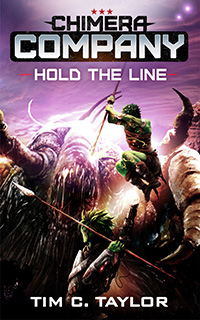
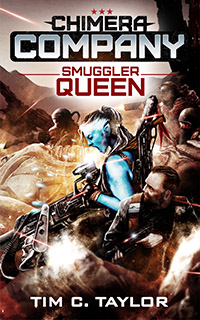

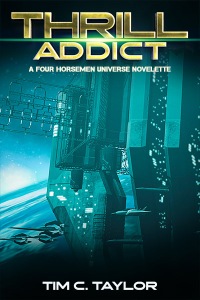
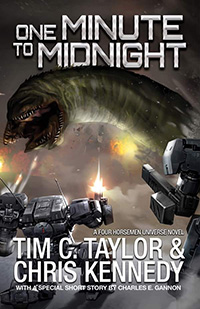
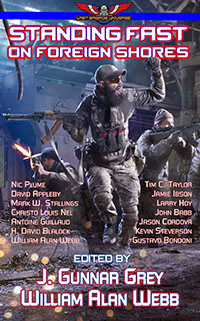
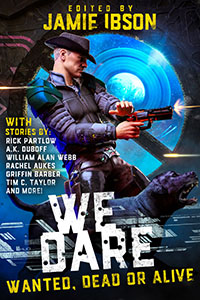
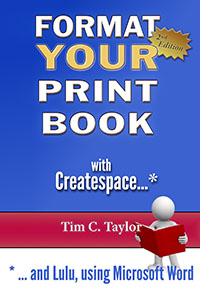

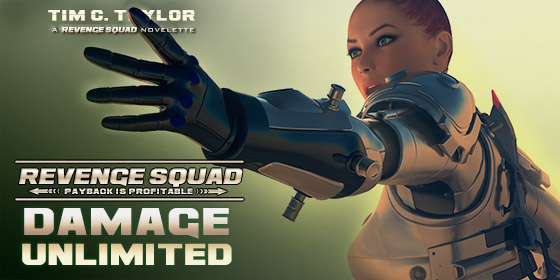

Pingback: Some Reactions to the 2018 Nebula Award Winners and a Postmortem on the 20Booksto50K Issue | Cora Buhlert
Tim, good insights here. Fuel for both readers and writers who work in this field. I am fascinated with all the new business models and delivery systems, and it seems that scifi readers and writers are often those most willing to try new technologies. I think most of the ebook market was built on sales in scifi, fantasy, and romance. So thanks to those readers!
As you wrote, Old Pub is learning too. The Murderbot novellas by Martha Wells are great fun, and those are from Tor.
Hi Mark, absolutely. I have the first Murderbot burning a hole in my TBR wanting to be read. You’ve just made it burn a little hotter 🙂 When Tor started pushing their novella line, it felt daring to me with my old school background. The ‘Old’ in Old Pub doesn’t mean they can’t learn new tricks! Just that they were around longer. I use the term to contrast against New Pub, which I think is a spot-on term. A number of people use ‘Legacy Pub’, but I feel that’s too misleading because it implies the likes of Tor are dead or dying and their owners mining the last dregs of energy from their IP libraries. That’s not the case.
I’ve mentioned before that Old Pub has learned tactics such as launching with 99c or $1.99 Bookbub deals. When we saw new novels by major frontlist stars such as Margaret Attwood starting to get such promos a few years’ back. If Old Pub continues to adopt new business models, then the Old Pub / New Pub dichotomy will become unsatisfactory in the way the Self Pub / Trad Pub already has. 🙂
Nice post, Tim, very informative. Novelettes all set in the same universe and serialised, are to some extent still ‘big fiction’ yet broken down into sections, more of a stream as it were (albeit there may be more bounded / emphatic sub-plots beneath that come to more of a closure). For fiction of this kind, do you have any handle on why more readers are preferring the stream approach as opposed to bigger chunks?
Hi Andy. Thanks. You’re right, of course. The intent is to create ‘big fiction’ with deep worldbuilding and explore it through a stream of bite-sized portions. The obvious and most significant analogy is to boxed sets of TV series. The ‘Song of Fire and Ice’ books have sold a staggering 70 million copies, but the TV adaptation, (Game of Thrones), is getting 30 million viewers per episode before even considering DVD sales. It’s how most people enjoy their fiction these days.
The streaming fiction idea is key to comics too. For me personally, it was the ‘extended storyline’ series I read in 2000AD back in the 70s and 80s that are an even greater inspiration for Chimera Company than TV such as Babylon 5. Classics such as ‘Judge Dredd in the Cursed Earth’ and ‘Strontium Dog: Portrait of a Mutant’ are a helluva benchmark.
As to whether people want to enjoy science fiction eBooks in this new way… well, authors have been doing this for some years now with sporadically modest success. But the trend is up. I’m hoping to build on that. It’s a big risk, but sometimes you’ve got to make the big call and see how the cards lie 🙂
Interesting, thanks. And I’m sure you’ll succeed 🙂 You have the talent, and burning energy.
Your post made me think more about *why* ‘most people enjoy their fiction these days’ in this way. Because I figured if we knew why, we could optimise 🙂
I speculated to myself that the ‘stream’ aspect is because people aren’t just ‘reading’, as we have tended to traditionally think of it, but are more in the mode of wanting the content to be a real part of their life. So more ‘experiencing’. Hence, like friends or family, it must be continuous, albeit developing (and so needing deep enough scope to never run out of development). Kind of like a never-ending story that’s a real part of their life (or at least a few years thereof).
Maybe a step to virtual worlds 0:
P.S. a roll of links to other author sites would be *such* a lovely addition to the site (very heavy hint I’m rebuilding and have most of a bookwall done https://wearemyth.wordpress.com/book-wall/ 😉
Yes, I do need to tidy this site! I think you’re right about the being a part of everyday life. Being welcomed into readers’ lives in that way is an privilege that is, of course, hard earned. I bang on about 2000AD a lot, but when that dropped through the letterbox, I knew damned well that it would be read cover-to-cover before the day was done. That’s a weekly that hasn’t missed a beat in 42 years. I’ve known people feel the same way about Corrie and The Archers (neither of which feature starships or mutie bounty hunters, and so are lesser fare). There was a craze in Japan for micro-serialized fiction sent by SMS a few years back. Never quite caught on in the English-language markets, but the seeds are all there. I hope 🙂
Thanks Tim for a day of not writing you sure wrote…
I’ll have to read it all later. I read parts of it today. Will have to get back to it when I get thru writing a review for your masterpiece, Battle of Earth.
Thanks, Melissa. I’m really stoked that you enjoyed the conclusion to the Human Legion. I took a few chances with that ending, and I think it paid off 🙂
I’d say it paid off in Spades. Still working on my review, your review. I’ll let you know.
Melissa
Thanks for another great in-depth analysis about the state of the market!
Thanks, JR. Of course, you yourself are an exciting part of that trend I was talking about. 🙂
I can only hope that my sales numbers reflect that! LOL